40+ Smart Ways To Conserve Money As Well As Energy
During wintertime, it is expected that we would do absolutely anything to keep ourselves from freezing, including cranking up the thermostats and water heaters. While this “solution” is viable for keeping us warm, unfortunately, it would create a rather big dent in our wallets which is obviously not what any of us need right now. Otherwise, why would you be surfing the web for an article on how to save energy? Maybe you are concerned about the environment, and therefore, you’re looking for ways you can contribute to protecting it. Either way, we’re here to share the most amazing energy-saving tips and tricks that are better for the environment and even better at helping us save money on utility bills.
Furnaces
Furnaces are one of the most essential and common heating systems used in most homes during wintertime; it is an enclosed structure in which heat is produced. Sadly, cleaning and replacing furnace filters are often neglected even though they’re used regularly.
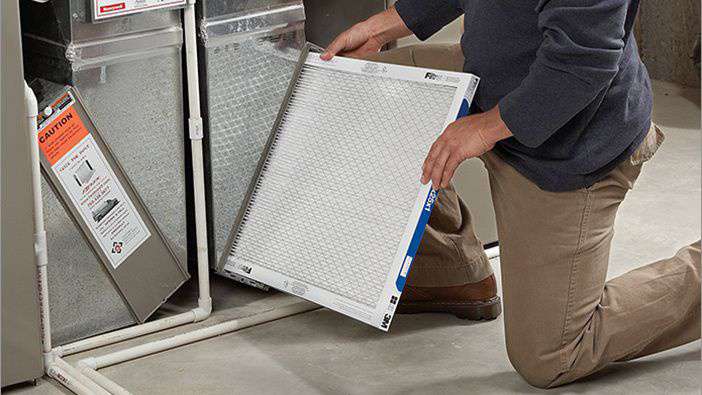
The dust, dirt, pollen, pet dander, and other debris caught in the filter would prevent the heat from journeying to us, not to mention that there’s a slight chance that the furnace might overheat and potentially cause the motor blower to catch fire.
Reusable Furnace Filter
As mentioned above, not cleaning and replacing your furnace’s filters could lead to airflow blockage and possibly fire. Therefore, we recommend you do regular maintenance. However, replacing furnace filters is rather pricey, especially if you are often buying new ones.
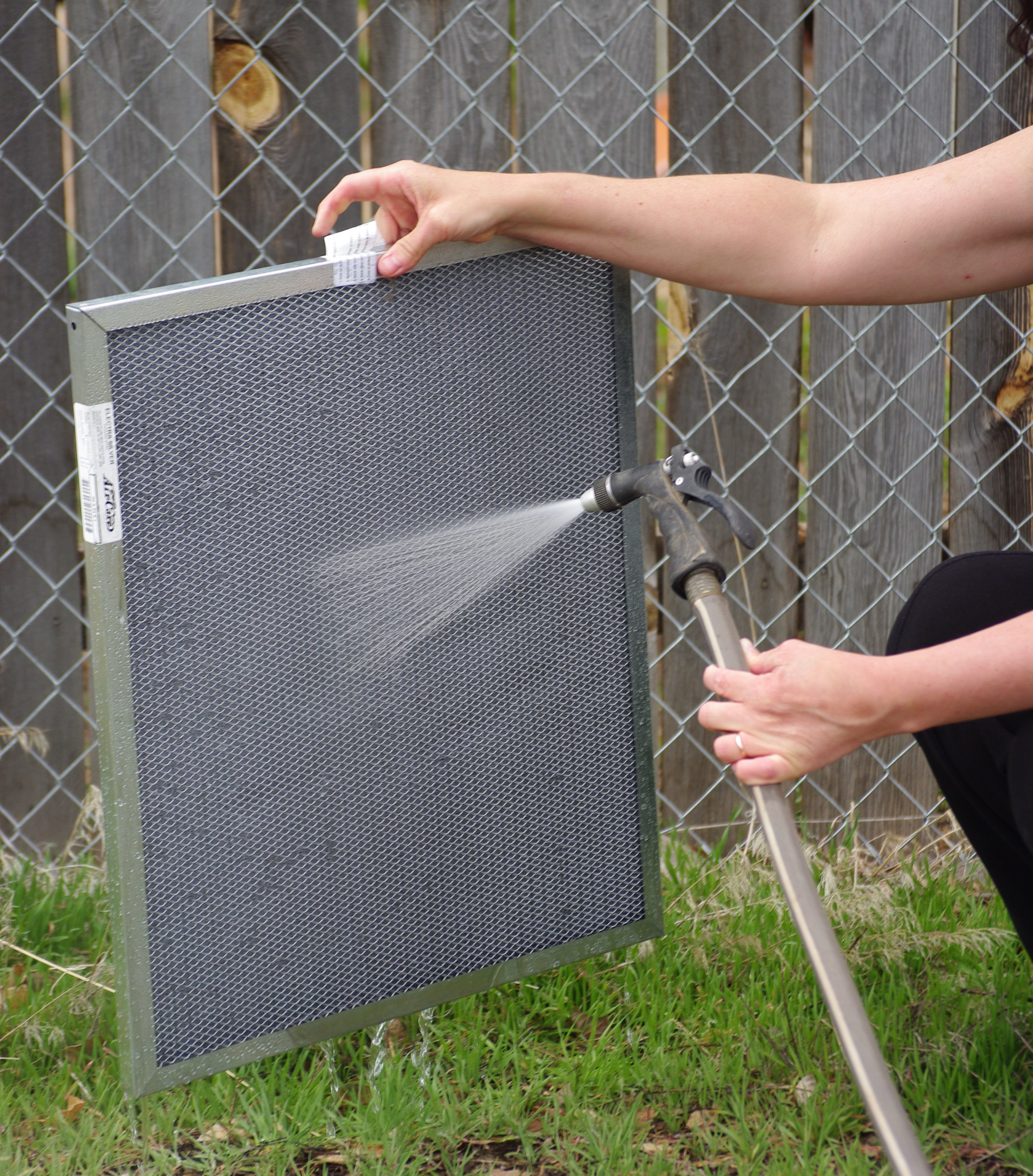
Thus, opt for a reusable furnace filter that you can reuse over and over again; simply wash the filter and put it back in place. It’s a reasonable substitute for regular furnace filters as it lasts much longer but doesn’t cost an unreasonable amount.
Furnace Inspection
However, if the airflow from the furnace hasn’t improved after you’ve cleaned or replaced the furnace filters, it may be due to the fact that your system is a bit faulty. In this case, you’d have to get your furnace inspected.
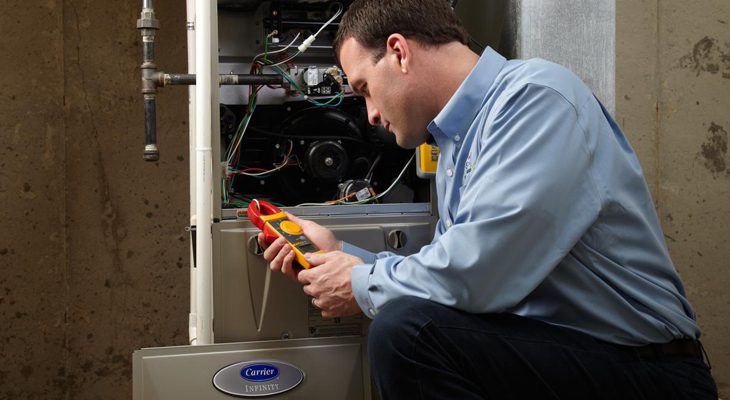
Inspections and tunes-up would ensure that the furnace is clean and properly adjusted for it to operate efficiently in addition to prolonging its lifespan; if the assessment shows that there is indeed severe damage, you’d likely have to replace it altogether.
Fireplaces
Apart from furnaces, fireplaces are also another standard heating system. When there’s a fire going in the fireplace, it keeps us perfectly warm and adds a relaxing and cozy vibe to our homes. However, when it’s not in use, it’s inviting the cold air from outside into our living rooms.
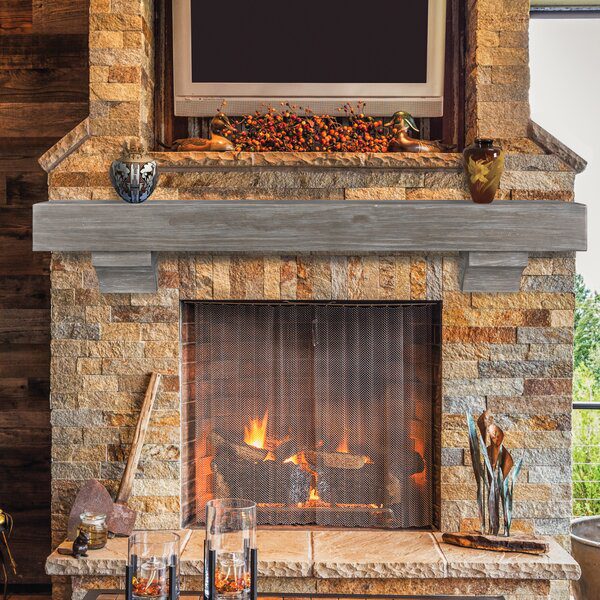
Therefore, one easy way to kick out the cold air is to close off the flue of your fireplace; if you have a glass door, be sure to close that as well. This sounds simple but can help keep the temperature in your home in a comfortable range.
Programmable Thermostat
Although thermostats are a lifesaver during the winter, they can be one of the most energy-wasting objects in your home. This is mainly because we often forget to turn off the thermostat or lower the temperature when nobody is home.
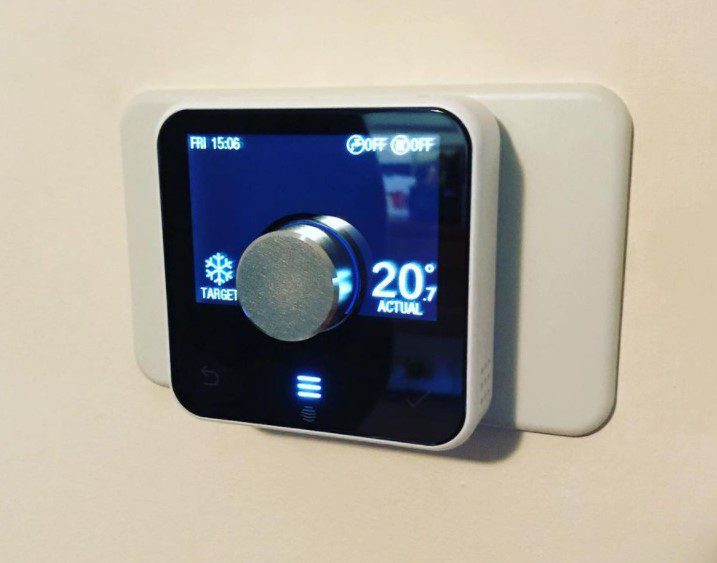
Programmable thermostats would be the best solution to this problem; they automatically turn the heat down during nighttime or when everybody’s out. According to the U.S Department of Energy, when you lower the thermostat by one degree for at least 8 hours, you’d be able to cut the heating bill by 1%.
Sealing Ductworks
Occasionally, the heaters in your home may already be cranked to the maximum, but your home just isn’t warming up; this could either be the result of a faulty thermostat or heated air escaping through the ductwork while traveling throughout your home.
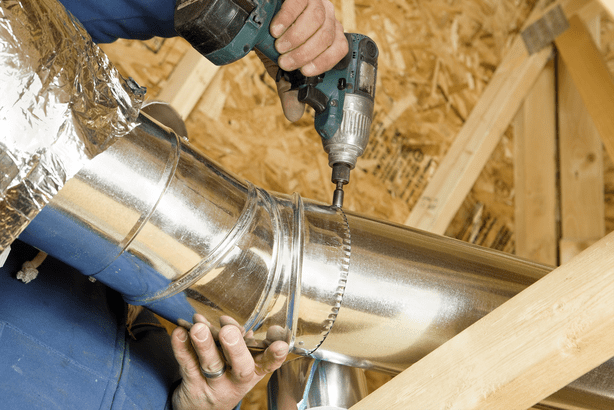
One simple solution is to seal all the ductwork in your home; you’ll need to bring in a professional for this job and to check if repairs are required. Once this is done, you’ll successfully prevent heated air from escaping.
Sealing Drafts
Heated air could escape through places like window gaps, door gaps, and dryer vents; these “problematic areas” allow warm air to slip through them, and that could be the reason your home isn’t warming up even though the thermostat is set on high.
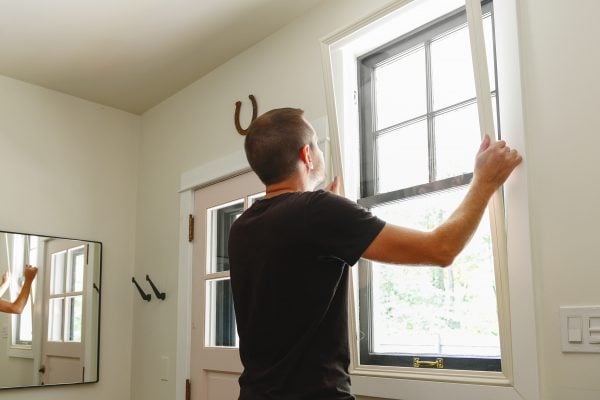
Patching up these spots with caulk or weatherstripping is a way to help insulate your house all year. Once that’s done, the air wouldn’t be able to “break out” that easily. As a result, you’d be able to lower the thermostat setting and save on utilities.
Air Conditioners
In addition to ductworks and drafts, window air conditioners are another place the cold air from outside can enter our homes, and heated air from inside our homes can escape. Again, this makes us crank up the temperature inside and receive a higher bill.
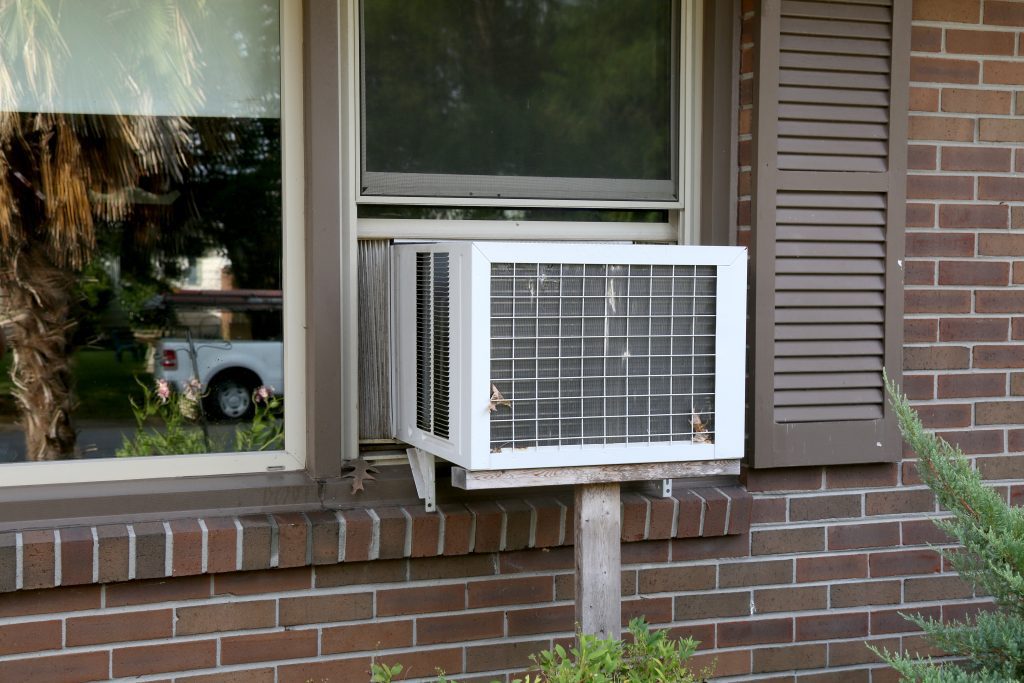
Therefore, it is rather important that you cover up your air conditioners or remove them altogether, although removing them may not be practical. They will keep you from melting once the summer finally returns, after all. Seal the gaps as best you can.
Insulate your Attics
Another way that the heated air in your home could escape is through the uppermost floors of your home; for most, this would be your attics which are probably the least concentrated area in your home when it comes to heating systems.
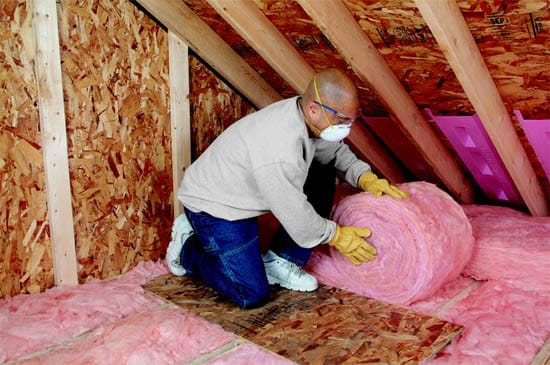
To prevent the heated air from escaping from the attic, line it with at least 6-inches of insulating material between the heated and unheated areas in your home. Because heat rises, this will ensure you retain more of it in the lived-in areas.
Insulate Pipes
We’re not the only ones that freeze when it gets too cold. Pipes freeze too; when they freeze, they become more fragile than when they don’t, and thus, crack and break easily. When this happens, we have to pay for the very costly repairs.
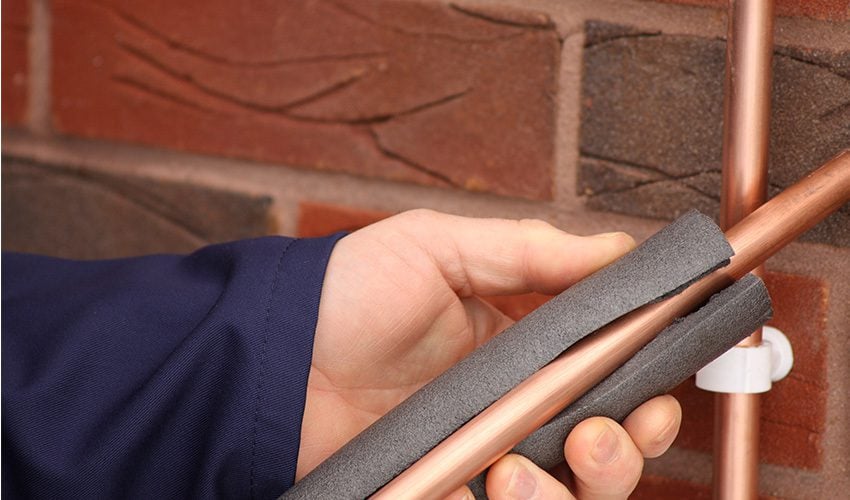
It has become easy to insulate the pipes in your homes. The insulating materials act as a coat for the pipes and keep them warm throughout the winter. This way, we wouldn’t worry about those midwinter freezes ruining our plumbing.
High-Density Insulation
Speaking of insulating your home, you may want to choose high-density insulation for the best results; this means more fibers per square inch than others. For example, rigid boards are best for exterior walls or cathedral ceilings. There are many types to choose from.
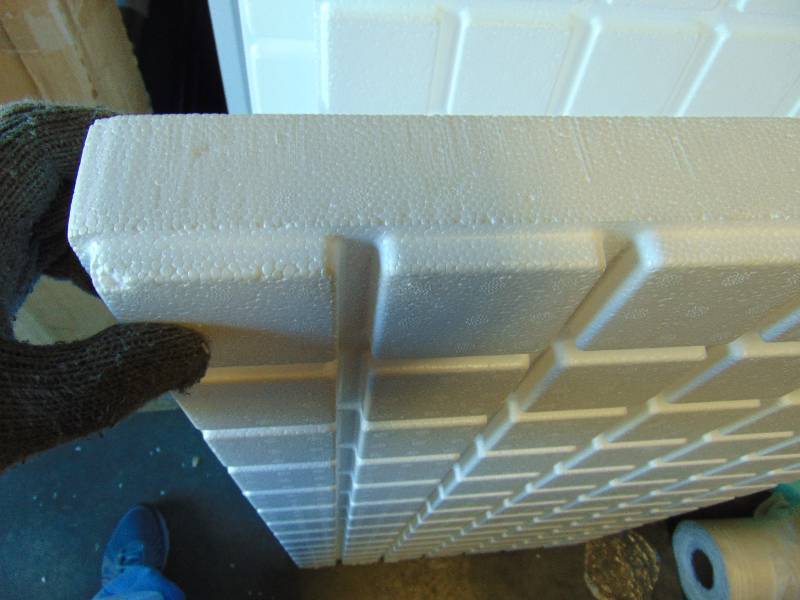
The most common insulation materials include fiberglass, cellulose, and foam, and they are all rather pricey. But when you think long-term, it’s a necessary investment. It’ll keep you so much warmer and only needs inspection once every few years to check for mold.
Cleaning Air Ducts
Think of the last time you cleaned your air ducts. If you’re like us, you probably can’t remember. We are once again creating a possible airflow problem and should find a way to remind ourselves to do this chore more regularly.
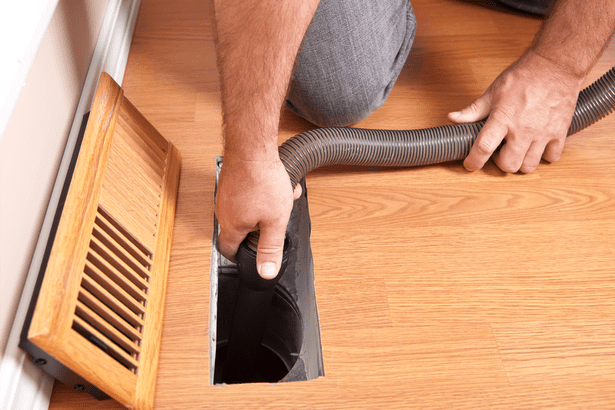
The amount of dust in the air ducts makes it difficult for the heated air to travel to us. Therefore, we’d have to clean it regularly to ensure that the warmth travels to us smoothly without dealing with any blockage in the air ducts.
Unblock Vents
Vents are the “transports” of heated air in our home; similar to ducts, if they are blocked, heated air would have a hard time circulating correctly. Therefore, we should always ensure that the vents are open and unobstructed by furniture or anything else.
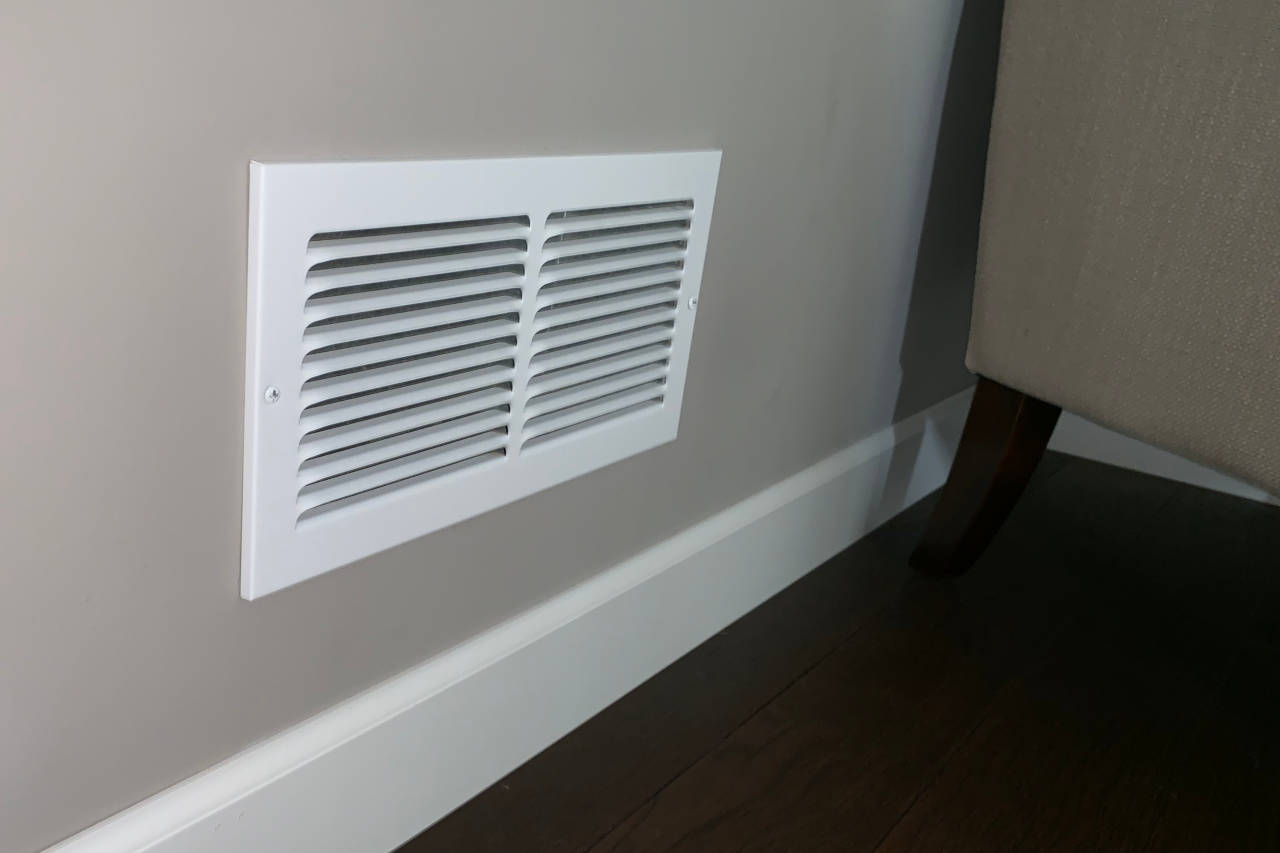
Take this time to rearrange the furniture in your home to ensure a clear path in front of or above the ventilating systems. You’ll realize that your home has gotten much warmer after you’ve unblocked all the vents in your home.
Water Heaters
Did you know that water heaters are accountable for almost 25% of your utility bill? That’s a surprisingly large portion. Just think of how much you’d be able to save if you simply lowered the temperature. Who likes being scorched in the shower, anyway?
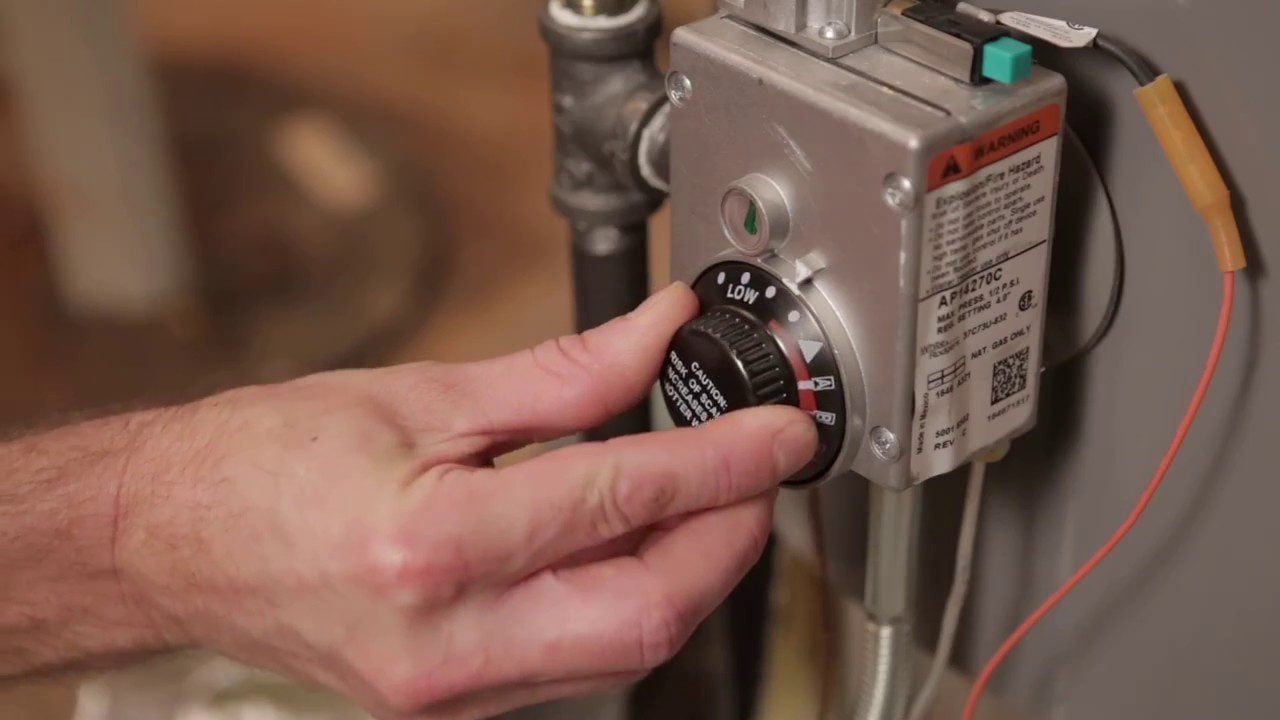
Setting the temperature of your water heater to 120 degrees would effectively save energy and money on utilities while being sufficient enough to keep you warm while you shower. Additionally, you could turn off the water heater when it isn’t in use.
Short Warm Showers
Speaking of showers, it’s absolutely normal that we take extra-long hot showers during the winter season because they keep us from shivering and can be very soothing and relaxing. Unfortunately, there’s a high price to pay for a short period of happiness.
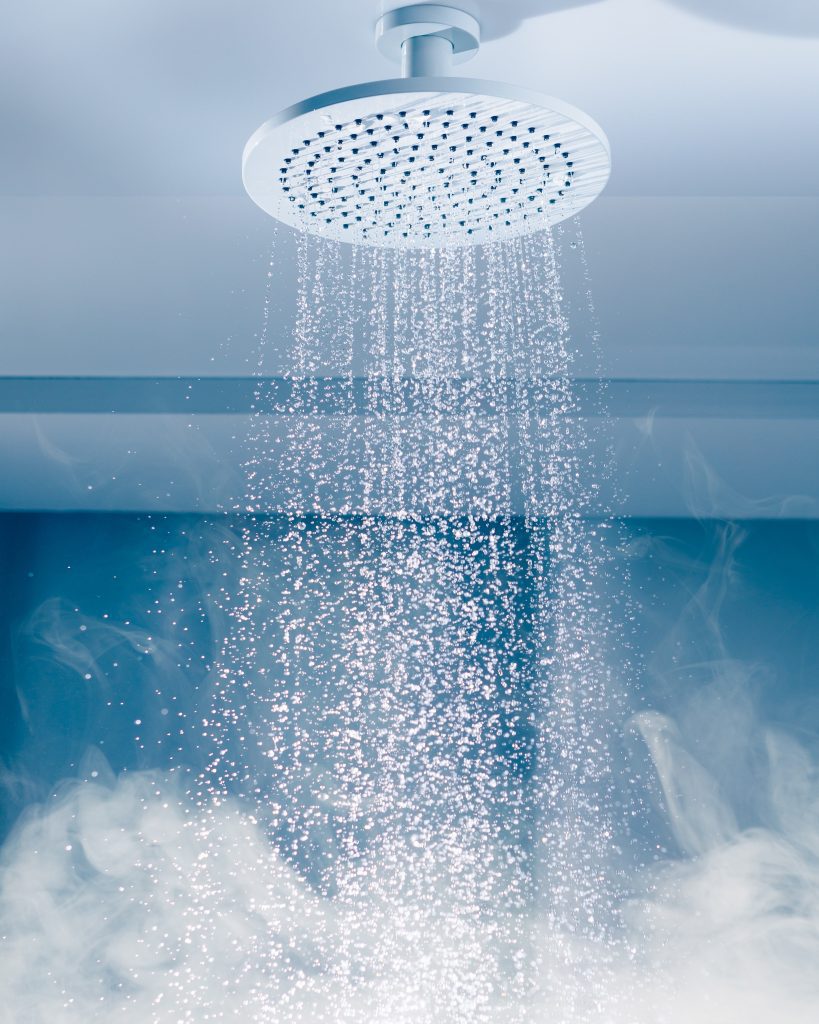
Save on both water and energy by taking a quick shower instead of a long one. We understand that this could be difficult, but it’s for the sake of lowering your utility bill, so better to save on the water and get in those pajamas quicker.
Wash Hair Every Other Day
One main reason we stay in the shower so long is probably that we spend time washing our hair. This is especially the case for those of us with long hair; it just takes us so long to wash it all.
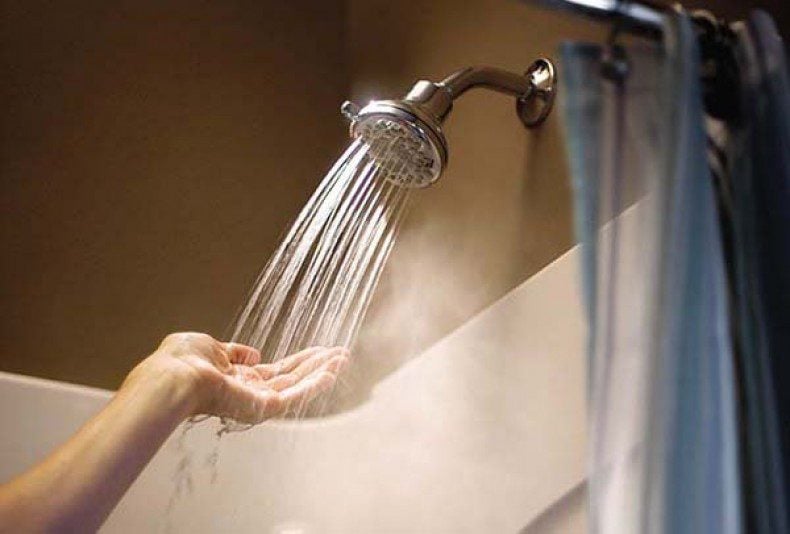
This solution is one your hairstylist will agree with wholeheartedly. Try washing it every other day instead of daily. Alternatively, you could use dry shampoo instead of cleaning it. This will save not only your hair but also some monthly cash.
Turn Water Off While Shaving
Another reason some of us stay in the shower for such a long time is that we like to shave, and we usually do it when we’re in the shower. Most of us shave while the water is on, which is quite wasteful.
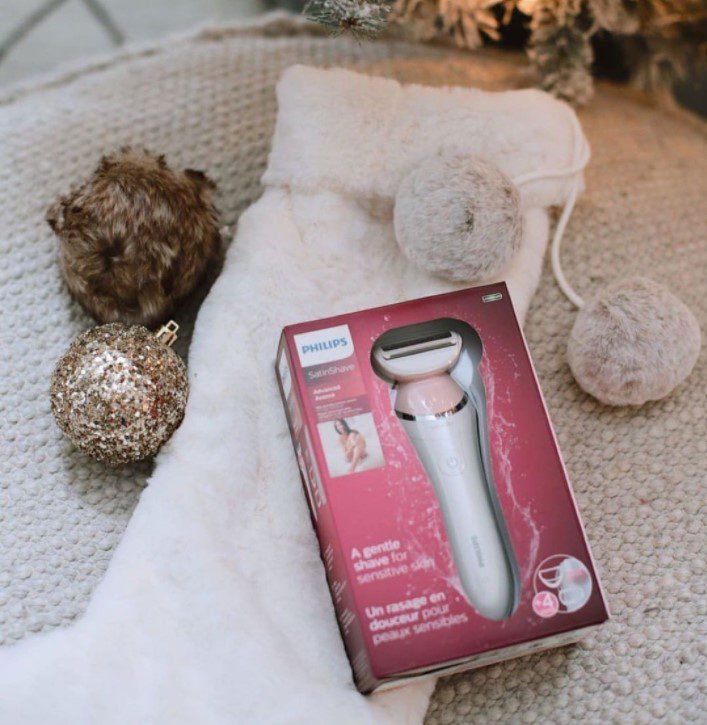
So, be sure to turn the water off while you’re shaving; believe us, you’d save a ton of water and money on utility bills. Alternatively, you could purchase one of those handy electronic shavers that don’t require you to shave in the shower.
Run Fans in Reverse
In addition to the tips above, here’s an easy trick to warm your home further during winter, and that’s putting your fans on reverse. Most of us have ceiling fans in our homes, but they’re turned off during wintertime because we’re already cold enough.
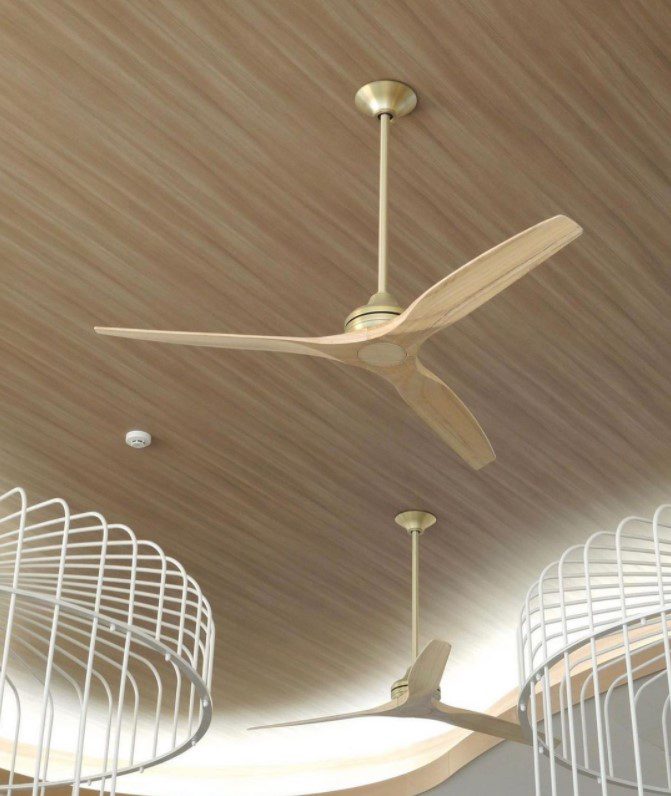
However, turning it on and in the opposite direction can actually help with heating. A counterclockwise rotating fan would produce a cool breeze; a clockwise rotating fan, on the other hand, will push the warm air in your home into circulation.
Let in Sunlight
Sunlight is an essential element for a human’s health and well-being. It can help generate vitamin D, support bone health, promote good mental health, lower blood pressure, and, most importantly, keep us warm. So, take advantage of the warmth the Sun provides us during wintertime.

Since there are so many benefits that sunlight brings us, it wouldn’t hurt to let it in; even if it is a rainy or overcast day, be sure to open the shades. Letting in the sunlight would also let in the warmth.
Energy-Efficient Light Bulbs
Lighting in our homes too has minimum effect on warming us up during the wintertime. Although lights keep us slightly warmer, turning on the lights all the time wastes a lot of energy and causes our utilities to spike.
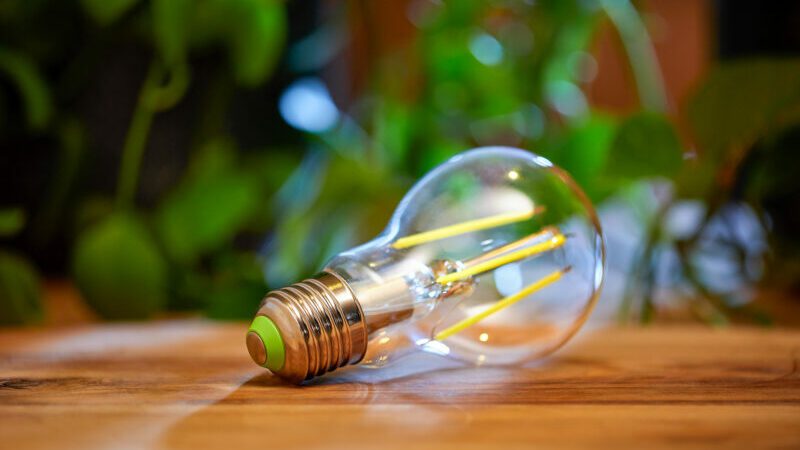
Switching the light bulbs in your homes to energy-efficient light bulbs, or better known as LEDs, is an excellent place to start. These light bulbs use only about a quarter of the energy consumed by halogen incandescent bulbs and last 25 times longer.
Let Laundry Pile Up
It is common to see people thinking that washing smaller loads is energy-saving when in reality, it’s actually not. Fun fact: the washing machine uses the same amount of electricity regardless of how much you’re washing. Makes sense when you think about it.

Therefore, you can save energy by doing big piles of laundry instead of small ones. Of course, don’t overload it so much that your clothes don’t get clean. But waiting until you have a full load will save you money down the line.
Permanent Press
If you’re someone who’s living alone, it might be difficult for you to do huge laundry loads, seeing that it would take some time for your laundry to pile up. It just isn’t practical as you’d need some of the clothes before you can wash them.
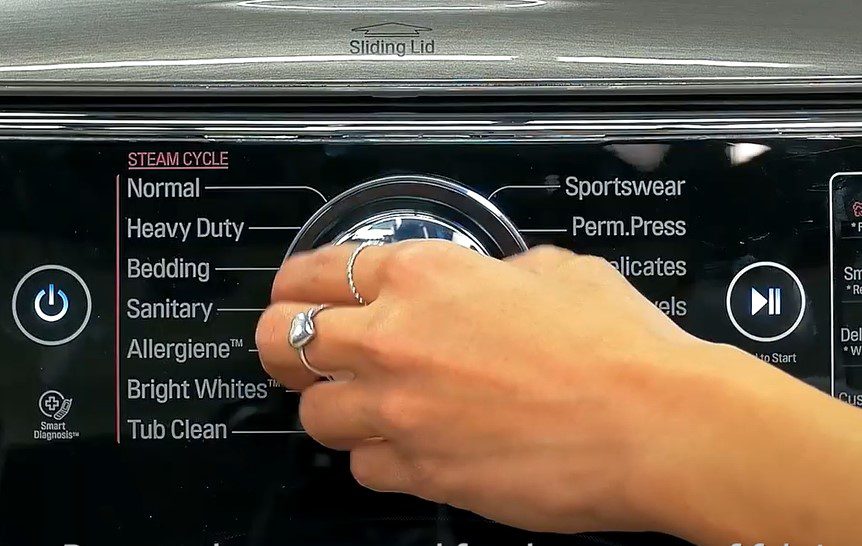
One simple solution for this is to set your washing machine to permanent press, which is the most energy-saving setting available; this setting is intended for thinner and more delicate clothing, but it should work for small loads of mixed materials.
Detergent
Speaking of washing machines, it’s a common error to use as much detergent as possible to clean those filthy clothes. Detergents are rather costly, and if you’re using a ton in each load, the detergent would be depleted in the blink of an eye.
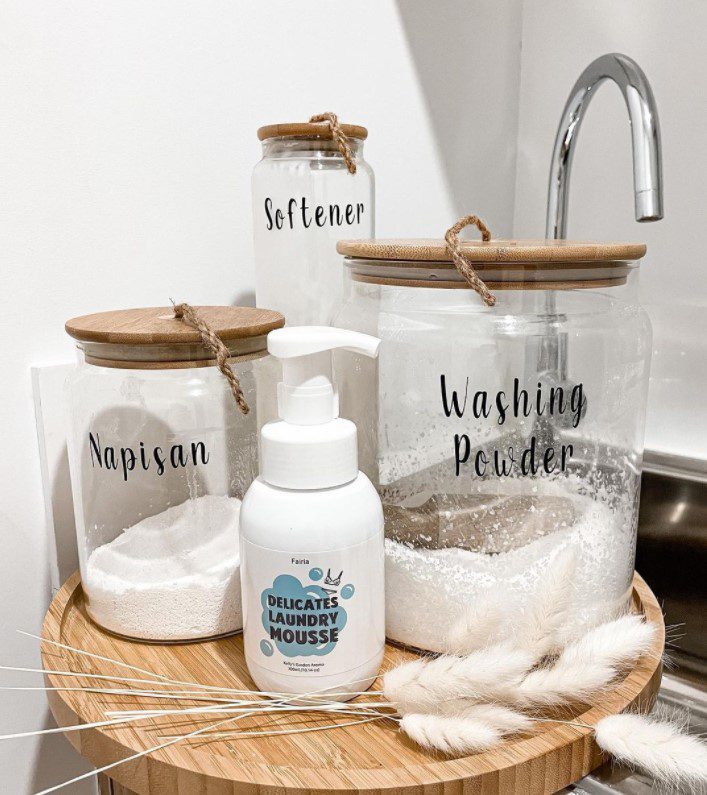
To remove difficult stains and clean the extra filthy clothes, soak them first. Soaking them before washing them would “weaken” the stains and dirt, making them easier to clean. By doing this, you’d be putting less stress on your wallet.
Don’t Stuff the Dryer
On the other hand, the dryer is the exact opposite of what was mentioned above. Even though dryers and washing machines are pretty similar, the concepts of saving energy for these two are different; the more clothes you stuff into your dryer, the more juice is used and thus using up more electricity.
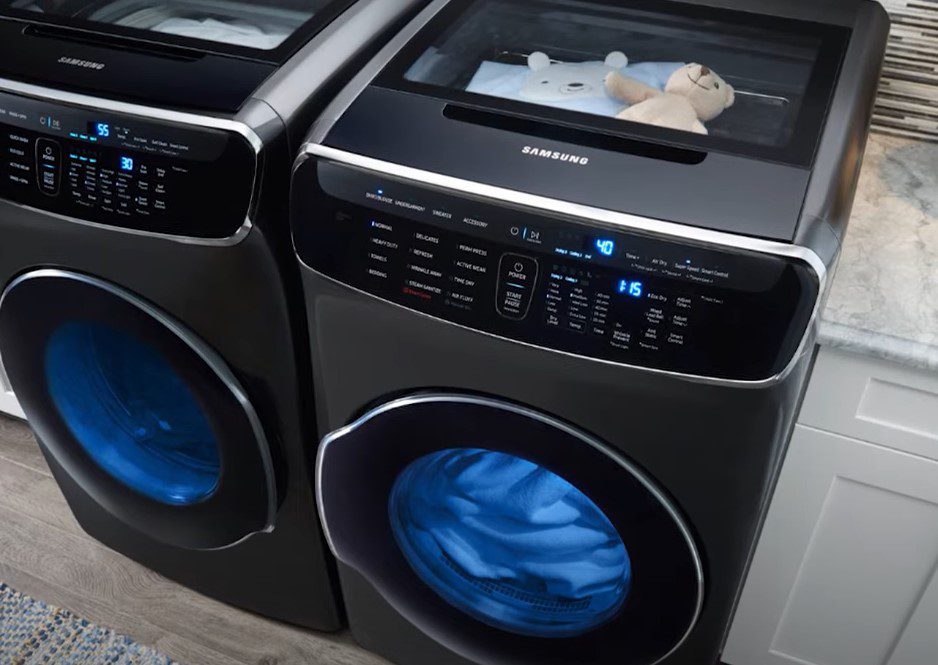
To save energy when using a dryer, try to dry small piles of clothes in one load; don’t be too concerned that it’ll take up much of your time. We promise it’s worth it. And it’s better than buying a second dryer!
Drying Clothes
As mentioned above, stuffing too many clothes in the dryer is a waste of energy. However, putting only a few items, it takes a lot of time. Since it’s too expensive (and not to mention it takes up space) to get a second dryer, so here is an alternative.
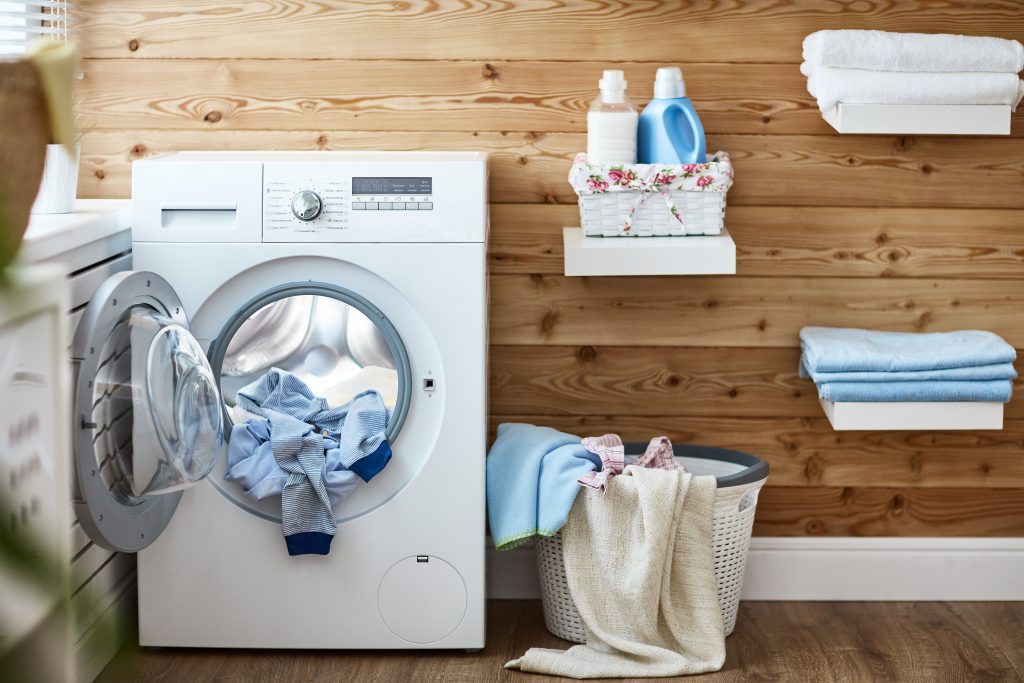
Firstly, you could air-dry your clothes on a clothesline if the weather allows or a drying rack indoors. Alternatively, you could run another spin cycle using your washing machine, which effectively reduces the time needed in the dryer; or use a clean, dry towel to absorb moisture.
Additional Drying Tips
Alternatively, you could dry lightweight clothes first before moving onto heavier fabrics. This way, your dryer would be able to build up the heat required before drying your heavier fabricated clothes; by doing this, it takes less time than usual which saves energy.
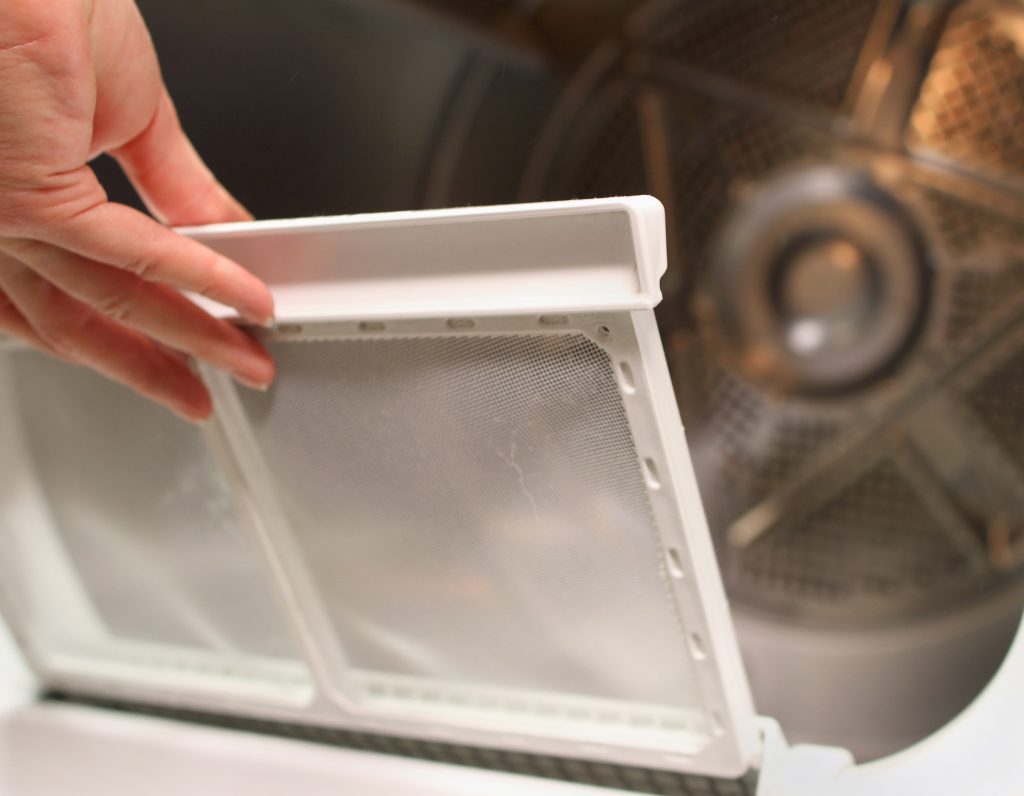
Another great dryer tip is to clean the lint filter; dust and dirt stuck on the filter cause the dryer to slow down, so cleaning the filter regularly, preferably after every load, would ensure that the machine is in tip-top shape.
Clean Your Pans
If you feel like you have to wait ages for your pot to heat up, it could be that your pot isn’t “clean” enough; the black stuff on the surface of your pots and pans might be blocking the heat from the stove from reaching the food within.
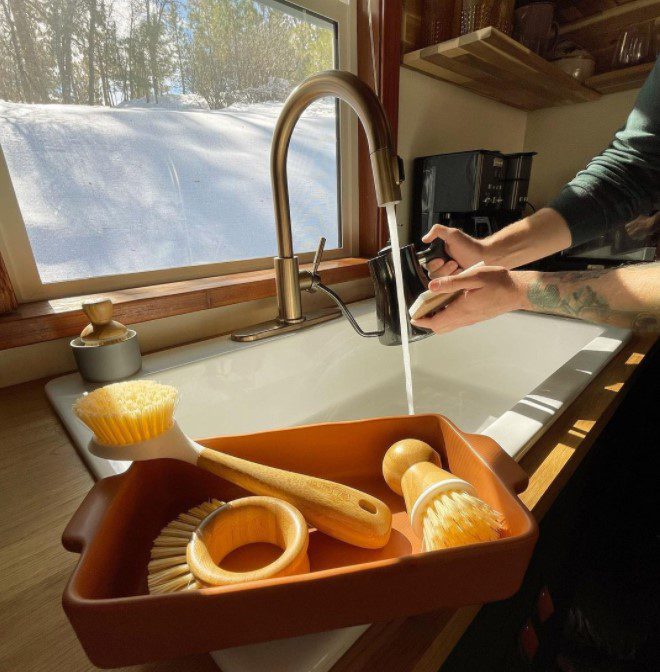
When the “pathway” of the heat is blocked, the cooking time would elongate, thus wasting energy. Therefore, it is extremely important that you clean your pots and pans (and even teapots) properly; give it a good scrub after each cook to rid it of the black buildup.
Don’t Pre-Wash Dishes
Speaking of cleaning, most of you might have dishwashers in your homes; they really make life easier, but the most common complaint that we’ve heard is that these helpful appliances occasionally don’t clean your dishes that well. We’ve been told over and over again to pre-wash them.
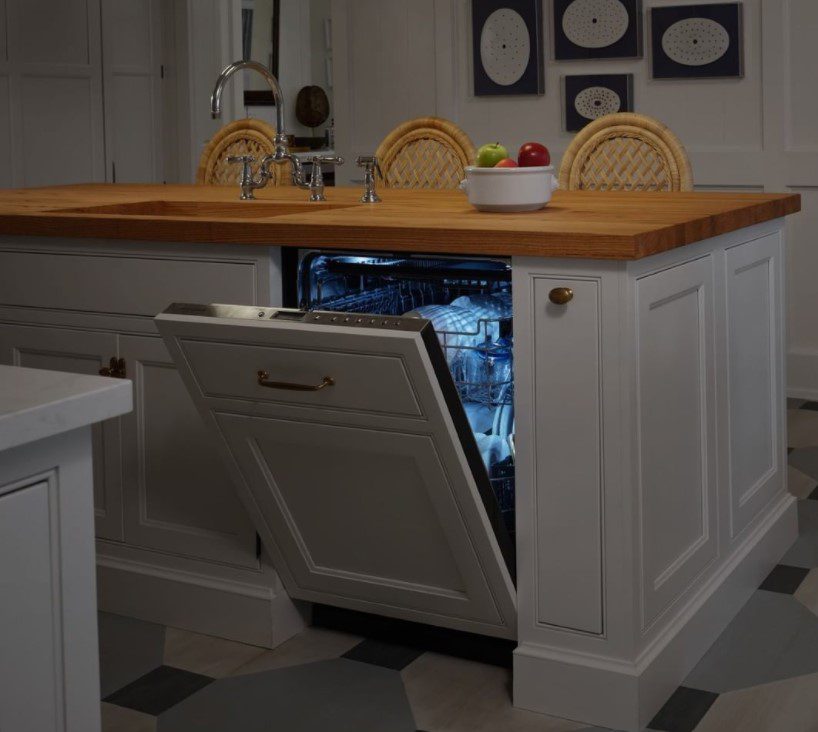
We have to tell you, rinsing the dishes before loading them in the dishwasher is wasteful. You should instead load the washer with all your dirty plates and wash only those that are still dirty after the washer is done with it; this saves many gallons of water.
Dishwasher Tetris
Similar to washing machines, dishwashers save energy if you can load as many dirty dishes as you can. Therefore, challenge yourself to a Tetris battle every time you load the washer; your goal is to fit as many dishes as you can in one go.
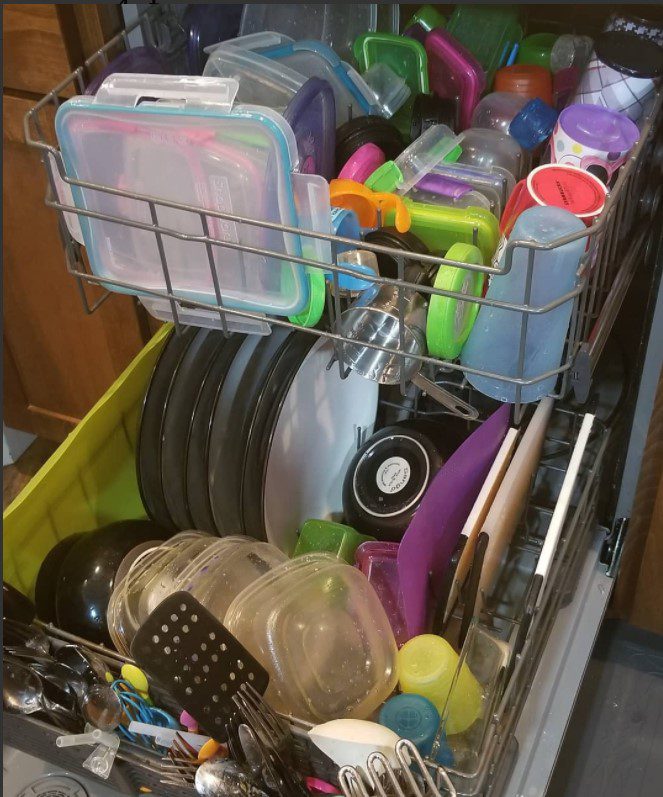
However, if you are living alone, this might be rather difficult for you to do, seeing as it’d be hard for you to accumulate a large number of dirty dishes. So, you could wash cooking appliances as well as dirty dishes in a load or wash after two meals instead of one.
Air Dry Dishes
Now that your dishes are squeaky clean, you’d need to dry them to store them in your cabinets, ready for use. Some dishwashers have the option for no-heat drying, but it uses a large amount of energy and may be frowned upon by those who are concerned about the environment.
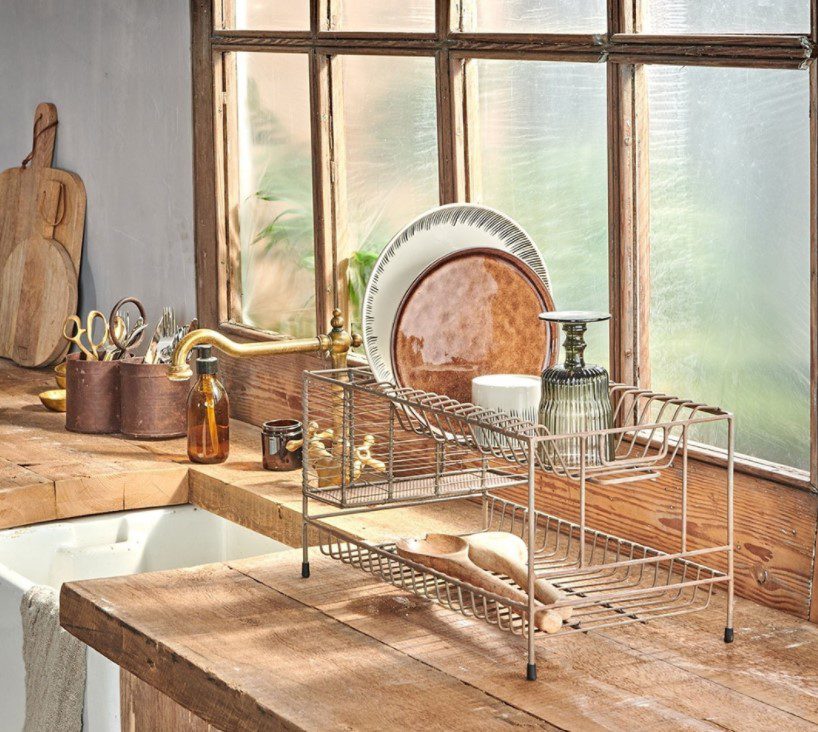
Therefore, you could let your clean dishes air dry instead of using the drying option on your dishwasher. Either open the door to your washer and let them dry naturally or move the dishes to a drying rack and let them dry overnight.
Cold Rinses
But if you don’t have a dishwasher, you have to wash your dishes the traditional way which is with water and good old dish soap. Normally, this is done with hot water because it might help with “melting” the dirt on the filthy dishes and make them easier to clean.
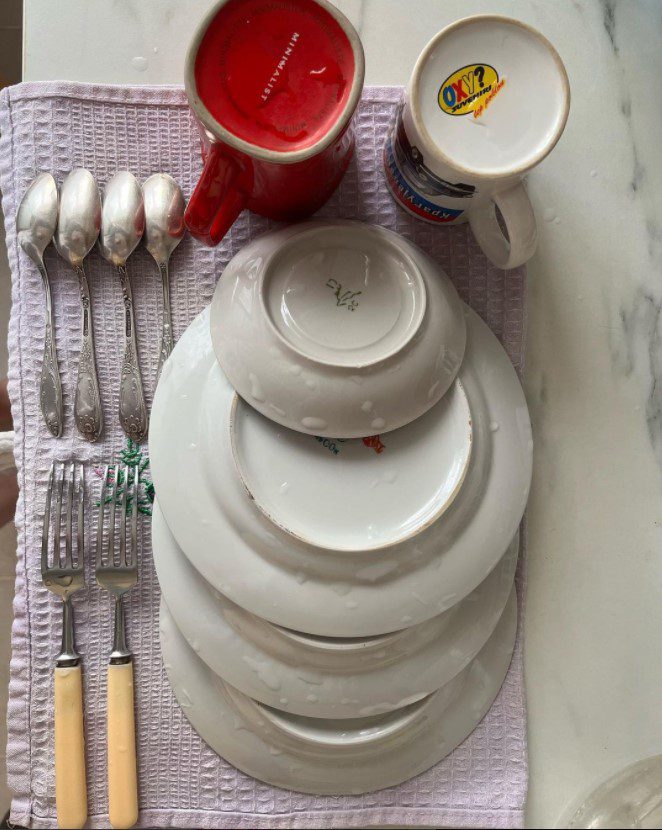
Nevertheless, this is actually an energy-wasting concept; it causes the water heater to work harder and use more energy. Therefore, instead of that you could wash with cold water and invest in better dish soap to save energy while cleaning effortlessly.
Fill A Sink
As mentioned above, some of the filth on the dirty dishes may be hard to get rid of even when you’re using a good dish soap; this is probably one of the biggest problems we encounter when washing dishes the traditional way.
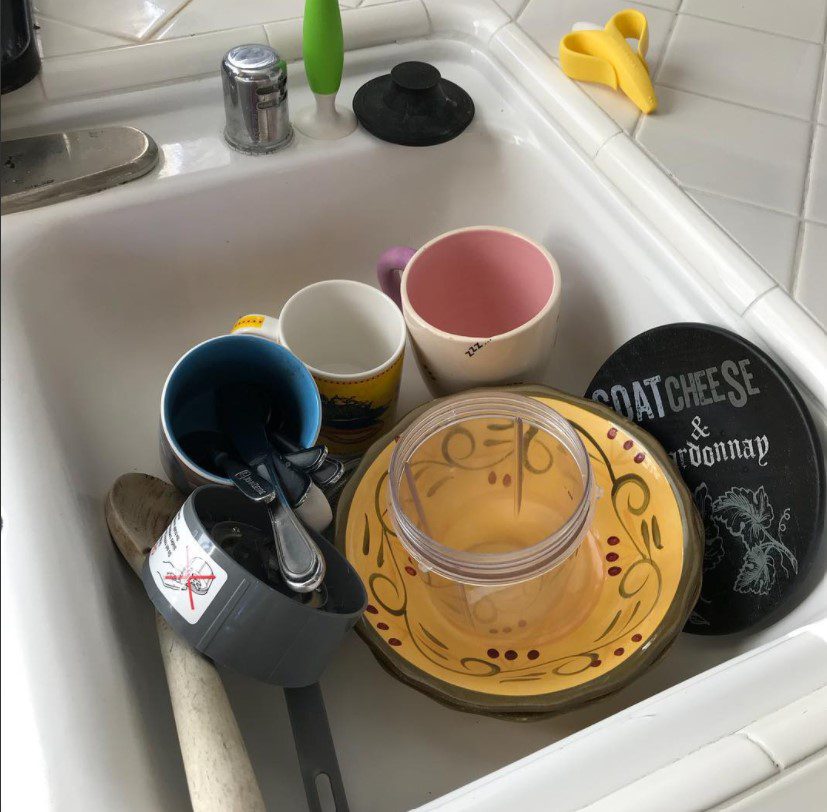
Normally, we’d keep the tap running while we scrub and scrub, but there’s a simple solution for this, and that’s filling your sink with water and a few drops of dish soap; this would lather up the dishes and make it easier to clean.
When to Wash
Did you know that washing dishes also has peak hours as well as non-peak hours? Usually, most of us would do our dishes once we were done eating and cooking; the peak hours for washing dishes would be during this time.

Similar to booking a room in a hotel, peak hours are more expensive while non-peak hours are cheaper. So, if you hold on and wash your dishes during non-peak hours, you’d be able to shave a few bucks on your utility bill.
Fix Leaky Faucets
If you have leaky faucets in your home, please do not ignore them. This may seem like a minor problem that is fine to push off for a while, but it is really not because leaks are an absolute waste of water.
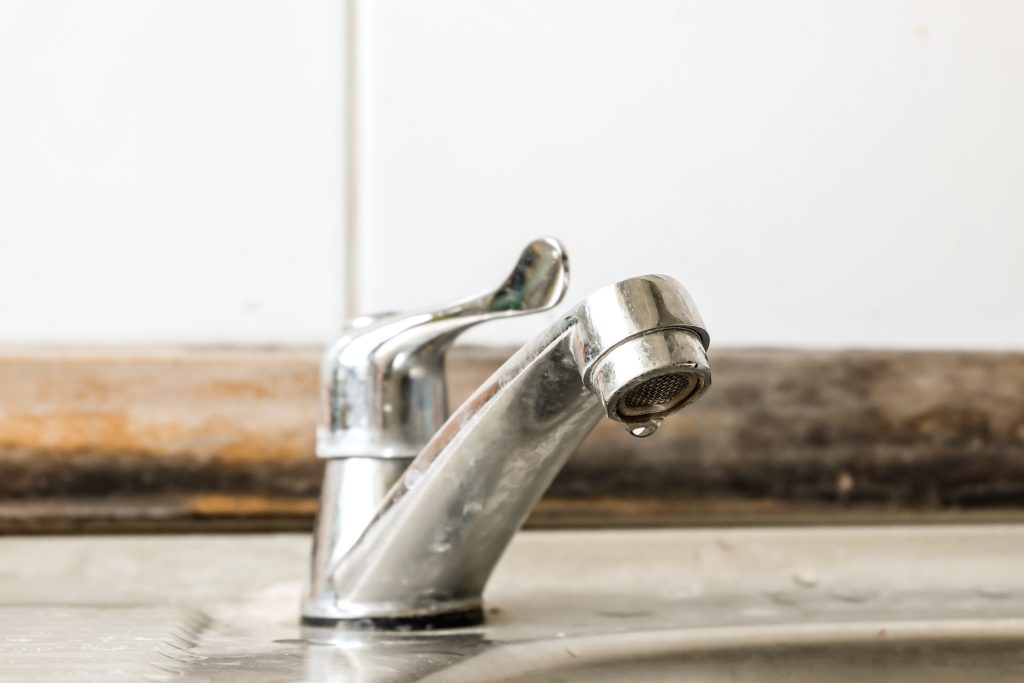
Therefore, you should check your home regularly for leaks and fix them as soon as possible. If you can’t get anyone to come to fix it soon, then you should turn off the source of water for that faucet until you get a professional to check it out.
Hot Tips
However, if you’ve cleaned your pots and pans and it still isn’t heating up as quickly as you’d like it. You could give this tip a go: try cooking at a high heat at the beginning, then lowering the flame or electric setting to complete the rest of your cook.

Alternatively, you could cover your pot with the lid when cooking; this way all the heat generated would be trapped inside the pot, making it heat up quickly which in turn makes cooking the things in the pot much easier and energy-saving.
Hotter Tips
Additionally, the types of burners used also have an impact on how quickly your pots and pans are heated. So, it is crucial that you use the appropriate burner size for your utinsils; small pans should be cooked on smaller burners and vice versa.
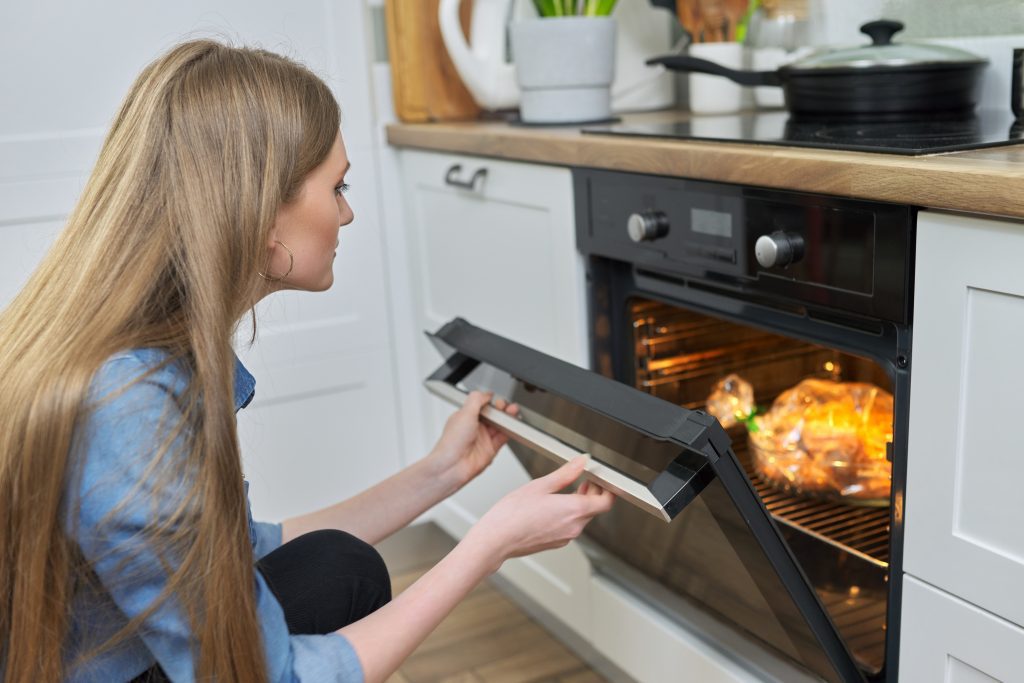
Furthermore, you should stop opening the over doors frequently when it’s in use; this is a common mistake for many. Every time the oven door is opened, roughly 30 degrees of heat slips out which is why your food isn’t cooking as quickly as you’d like it to.
Just Cover the Top
It is rather common that we fill our pots and pans full of water to cook vegetables or other foods; unfortunately, this is pretty wasteful as the water used would usually be poured away when we are done with it.
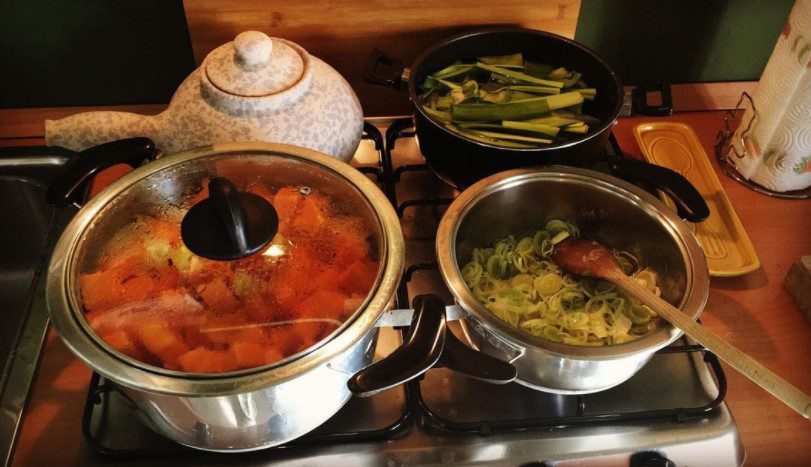
Therefore, to cook in a way that’s much more environmentally friendly, we should only fill the pot with water that just about covers the top of the vegetables or foods that we’re going to cook. When we’re done cooking, we can use the water to water our plants.
Microwaves and Toasters
If you’re simply heating up leftovers, instead of conventionally heating it on a stove or oven, you should make use of your toasters and microwaves. These convenient little time savers are also actually much more energy-saving than stoves and ovens.
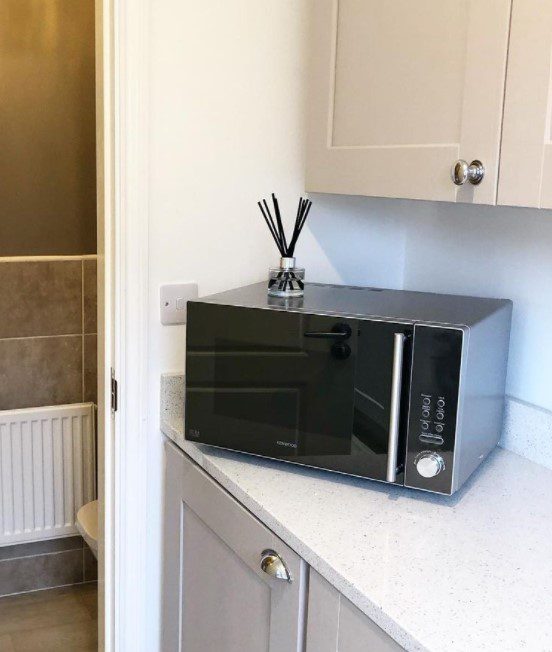
In addition to saving energy, using microwaves and toasters to heat your food up saves you some money on your utility bills; it also takes less time. If you don’t have one in your home, we’d say it’s a great investment.
Setting the Right Temperature
We’re sure that most of you have refrigerators in your homes, but do you know what temperature to set it at? Many don’t know this but setting the wrong temperature for your refrigerator would waste energy or not keep your foods fresh.
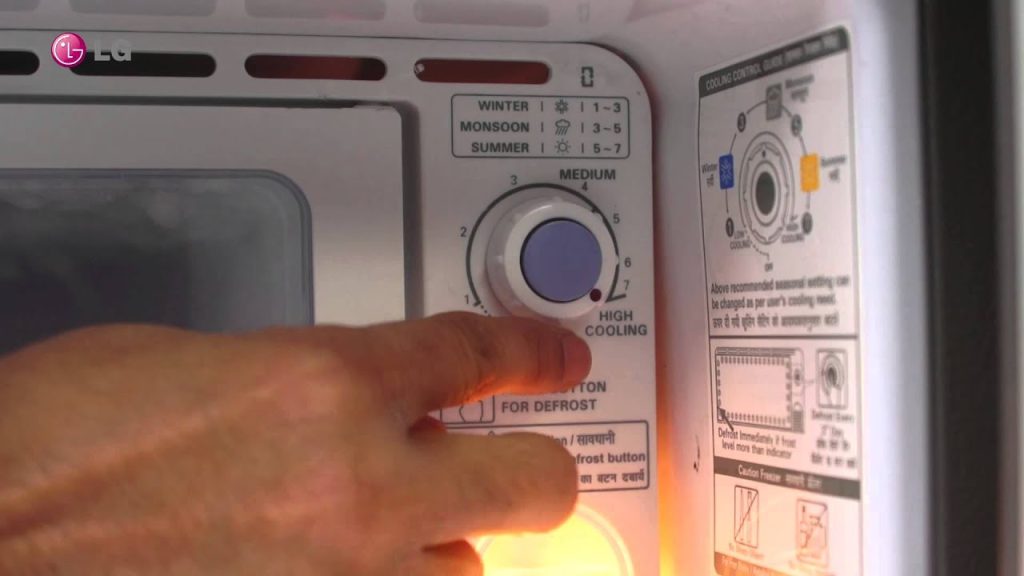
The fresh food section of your refrigerator should be set between 37- and 40-degrees Fahrenheit whereas the freezer section should be set at 5 degrees Fahrenheit; at this temperature, your refrigerator wouldn’t be wasting unnecessary energy while keeping your foods fresh.
Refrigerator Tip
Another thing you should do when storing foods in your refrigerator is cover all the items properly. This would ensure that the moisture of each food stored is locked within its “cage”; if moisture is released, the compressor would have to overwork.
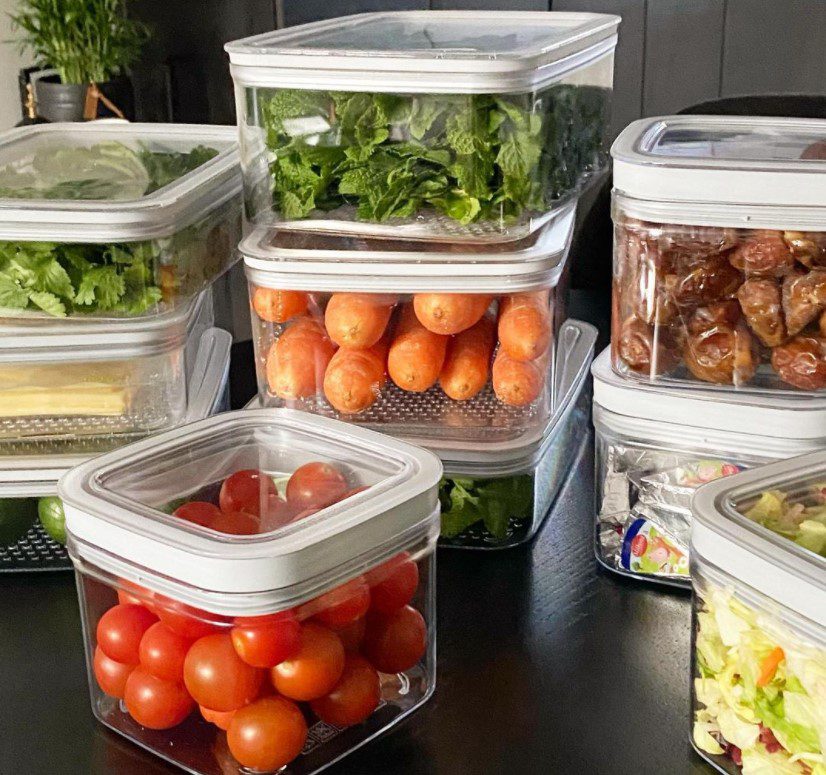
When the compressor overworks, it uses more energy than it should which is wasteful and is a rather large contributing factor to your large utility bill. Moreover, covering the items in your refrigerator prevents dirt and dust from getting to the foods.
Spacious Refrigerator
While both the refrigerator energy-saving tips mentioned above are important, you should always keep in mind to leave sufficient space in your refrigerator; this is something many of us neglect because we over-purchase groceries and have to stuff our refrigerators.

Overstuffing refrigerators is actually wasteful; refrigerators are much more efficient when they aren’t crammed. Another thing you should take note of is to leave enough space behind the appliance so that the air there can circulate. And keep plastic bags out as well.
Power Off Electricity
The main reason you’re receiving such an expensive utility bill is that you’re using too much electricity, some unnecessary even; unnecessary use of electricity means that you’re using electricity in the event that you’re not home or when you’re sleeping.
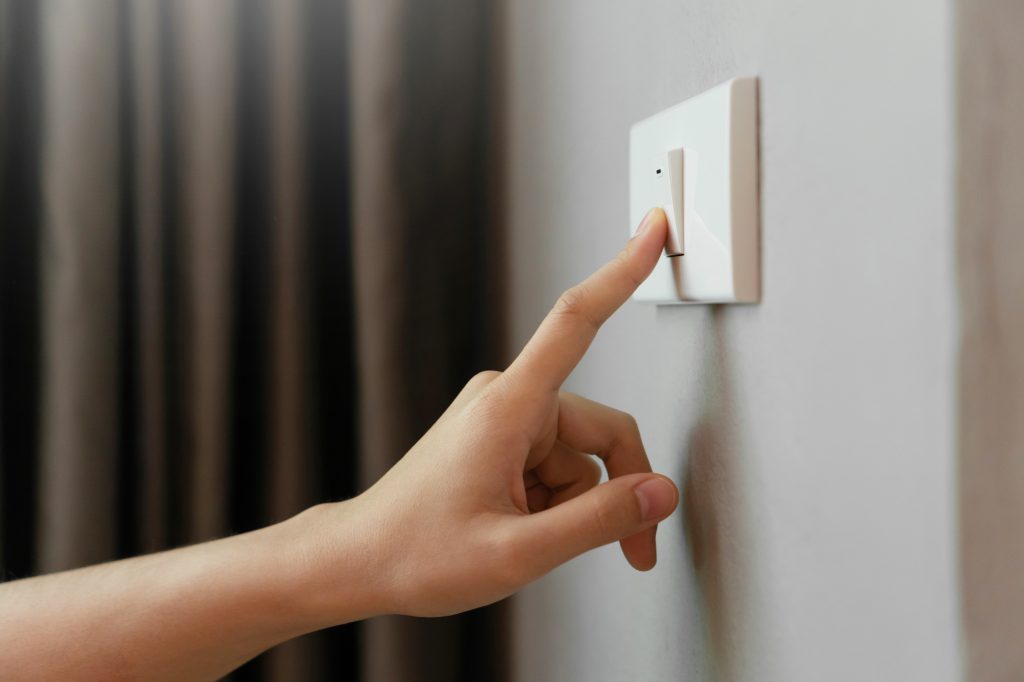
One simple solution to cutting your utility bill is turning off all electricity when you’re not actually using it. For example, laptops and computer monitors leech energy even when they’re in sleep mode, so it would be wise that you turn them off when they’re not in use.
Unplug
When talking about powering off unnecessary electronics and appliances, you may think that we mean turning off the power socket. Actually, we’re talking about unplugging it altogether because although the item is powered off, it could still draw electricity.
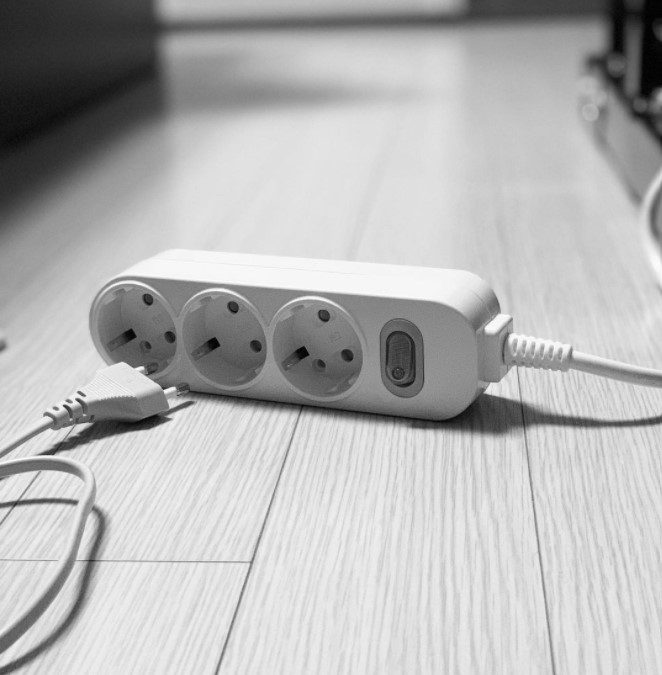
This is something not many know but is in fact, true. In addition to laptops and computer monitors, other electronics and appliances like hairdryers and hair straighteners that are often plugged in a socket but turned off may be why your utility bill is so expensive.
Power Strips
Powering off and unplugging electronics and appliances when not in use is easier said than done; it is easy to forget to power off and unplug electronics and appliances when we’re leaving the house, especially if we’re in a rush.
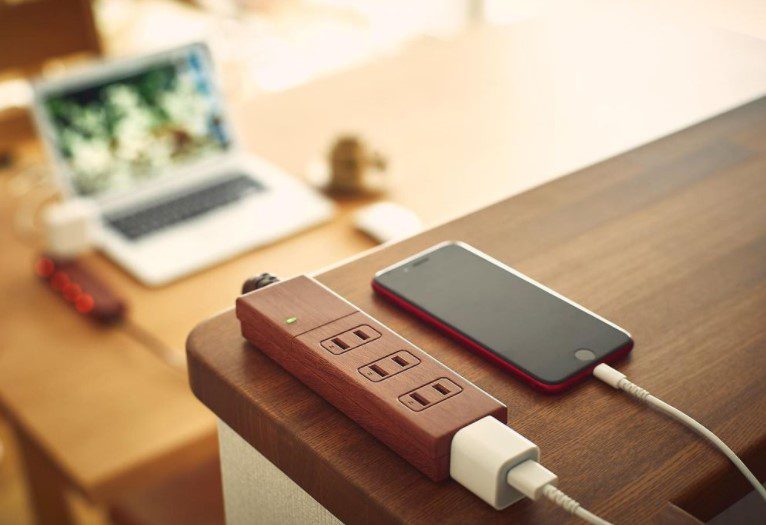
This is where power strips come to the rescue. Power strips allow you to shut down a couple of devices at once which checks off the box of turning off and unplugging devices when they’re not in use in a short amount of time; perfect for when you’re in a hurry!
Check the Bill!
Finally, remembering the famous idiom “to err is human”, utility companies may make mistakes once in a while so be sure to check your bill properly to catch their mistakes; question any strange numbers and be sure to check if the meter matches the usage posted on the bill.
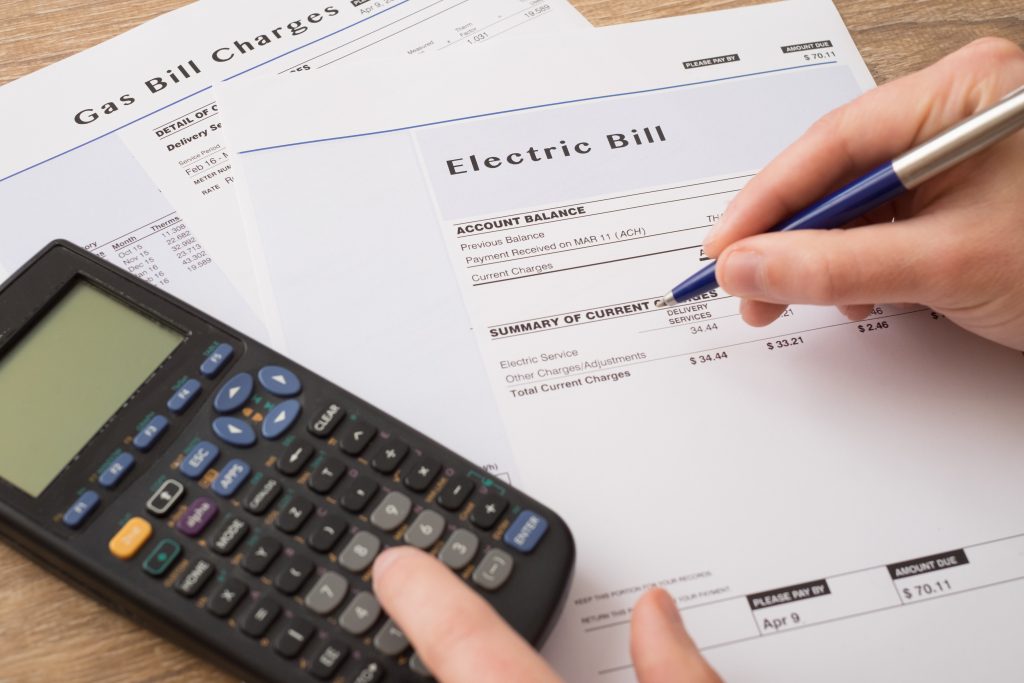
Another advantage you gain from checking your bills is knowing where it is mostly spent. By knowing this, you could try to save on where it’s most spent. For example, if you notice that you keep on forgetting to turn off electricity when you’re not home, this should be something you take caution with from now on.
Outdoor AC
An AC unit is an essential part of any household. Aside from that, it can also be quite expensive to get and install. Thus, it is very important to know how to take care of it so it can serve you and your family for a long time.
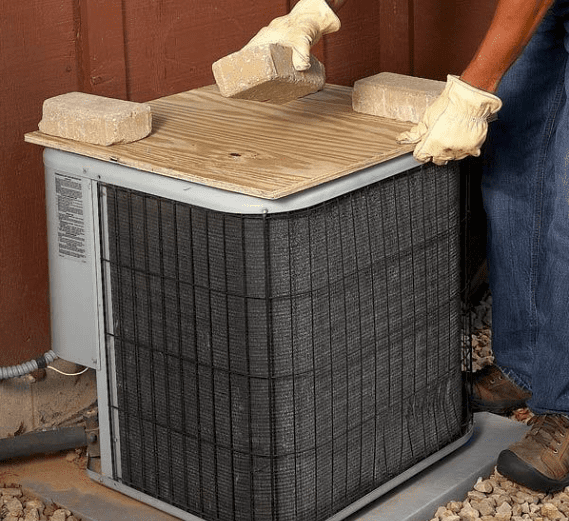
As you probably know, it’s necessary to cover your outdoor unit to protect it from the elements. That said, it’s better to use a piece of plywood, as shown above, instead of a cover since covers typically trap humidity, which can damage the unit, promote the growth of molds, and can sometimes house rodents.
